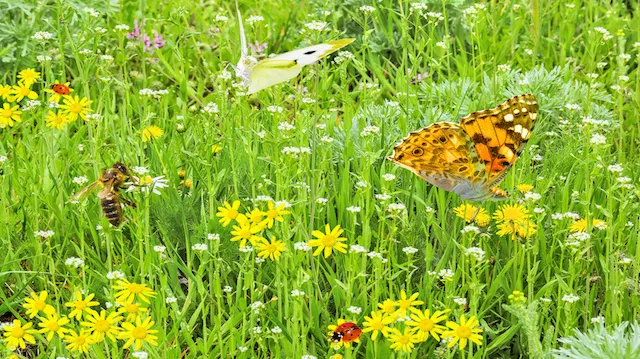A United Nations Science Report just delivered some very sad and scary news: 40 percent of invertebrate pollinator species, including bees and butterflies, are nearing extinction. If we don’t act fast, not only could these species and 20,000 others like them disappear, but a large percentage of the world’s food supply could also vanish along with them.
The report, which was approved by 124 nations, drew on scientific studies from all over the world. The studies revealed that two in five species of invertebrate pollinators (such as bees and butterflies), as well as one in six species of vertebrate pollinators are on the path to extinction. Lead author Simon Potts summed up the findings to the Associated Press: “We are in a period of decline and there are going to be increasing consequences.”
The consequences Potts is alluding to involve more than just the tragedy of these species disappearing, although this in itself should be reason enough to take action. The disappearance of these species could be devastating for public health, and the economy as well. Seventy-five percent of the global food crop, including many fruits, vegetables, nuts, chocolate and even coffee, depend on pollination. The loss of all that food — and the resultant loss of revenue — will be harmful for farmers and consumers worldwide.
Learn more about what would happen to our food supply without bees and other pollinators.
So why is it happening?
If you guessed humans are involved somehow — you’re right! Specific culprits cited by the report include the use of certain pesticides (specifically neonicotinoids), the spread and development of cities, declining crop diversity, and climate change. Because there are multiple reasons that these species are declining, addressing the situation will require a variety of responses and solutions.
What each of us can do from our own backyards
You don’t need to join a pollinator advocacy group or lobby the government to take action — although this would also be helpful! There are steps you can take in your own backyard garden to support pollinators. These include the following:
Choose a wide variety of native plants
Fill your garden with native plants in a wide variety of colors and shapes, and include an assortment of plants that bloom in spring, summer, winter and fall. The greater the diversity of native plants you have, the more pollinators your garden will attract and support.
Reduce or eliminate pesticides and herbicides
Pesticides can reduce or eliminate available nectar and pollen sources in your garden. Use homemade remedies such as garlic spray, or pesticides made from plants or microbes instead. Be sure to choose organic fertilizer as well. Along these lines, if you’re purchasing your plants from a nursery, make sure they also do not use pesticides, especially neonicotinoids! The organization Friends of the Earth (FOE) provides a great list on its website of nurseries that do and don’t use pesticides on their plants.
Plant milkweed

Include dead tree trunks
Leave standing dead trees, sometimes called “snags,” in your landscape for wood nesting pollinators like bees, wasps and beetles.
Provide a water source
Providing pollinators with a convenient water source, like a small birdbath, will reduce the time they spend searching for water and increase the time they spend pollinating.
Leave some shelter
Keep some of your garden or yard wild, which leaves some space for pollinators to make a home.
The decline of pollinators is very serious, but that doesn’t mean we don’t have the time and power to reverse it — if we take action!
—Teresa Manring
Teresa is a freelance writer and yoga teacher currently living in Sri Lanka. She loves to write about policies, ideas, and practices that promote a healthy planet and create healthy people.
Sources:
http://www.nrcs.usda.gov/wps/portal/nrcs/main/national/plantsanimals/pollinate/gardeners
http://news.nationalgeographic.com/2015/05/150524-bees-pollinators-animals-science-gardens-plants
http://bigstory.ap.org/article/b1d7229217ac45b6a1681b8cdcbabe90/un-science-report-warns-fewer-bees-other-pollinators
http://www.nytimes.com/2016/02/27/science/decline-of-species-that-pollinate-poses-a-threat-to-global-food-supply-report-warns.html?_r=0
http://grist.org/food/mass-extinction-threatens-the-worlds-pollinators-and-its-crops
